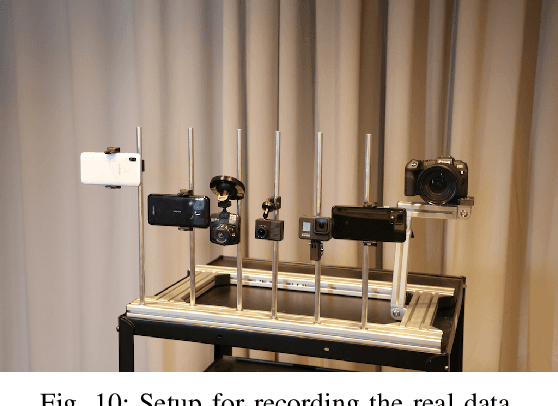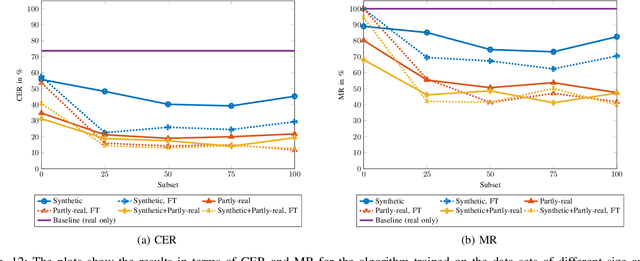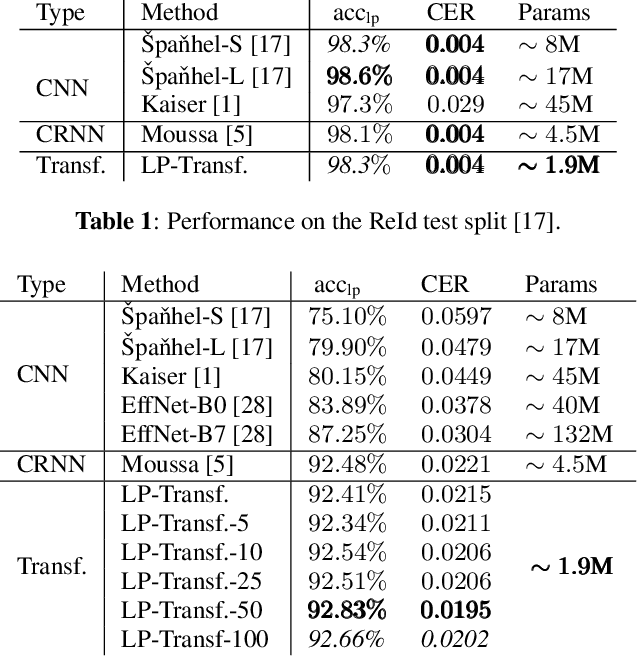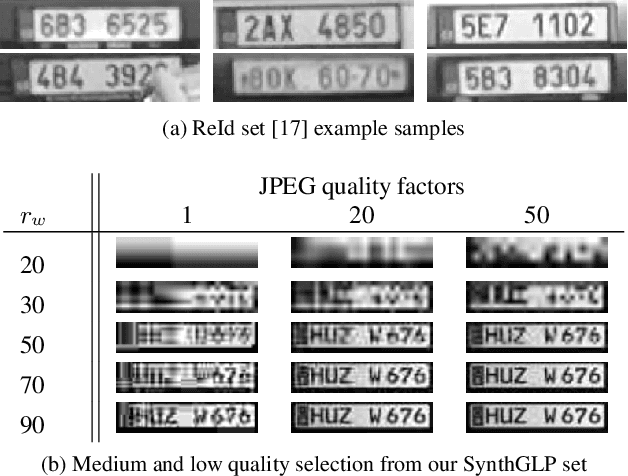Denise Moussa
Trustworthy Compression? Impact of AI-based Codecs on Biometrics for Law Enforcement
Aug 20, 2024Abstract:Image-based biometrics can aid law enforcement in various aspects, for example in iris, fingerprint and soft-biometric recognition. A critical precondition for recognition is the availability of sufficient biometric information in images. It is visually apparent that strong JPEG compression removes such details. However, latest AI-based image compression seemingly preserves many image details even for very strong compression factors. Yet, these perceived details are not necessarily grounded in measurements, which raises the question whether these images can still be used for biometric recognition. In this work, we investigate how AI compression impacts iris, fingerprint and soft-biometric (fabrics and tattoo) images. We also investigate the recognition performance for iris and fingerprint images after AI compression. It turns out that iris recognition can be strongly affected, while fingerprint recognition is quite robust. The loss of detail is qualitatively best seen in fabrics and tattoos images. Overall, our results show that AI-compression still permits many biometric tasks, but attention to strong compression factors in sensitive tasks is advisable.
Can We Identify Unknown Audio Recording Environments in Forensic Scenarios?
May 03, 2024Abstract:Audio recordings may provide important evidence in criminal investigations. One such case is the forensic association of the recorded audio to the recording location. For example, a voice message may be the only investigative cue to narrow down the candidate sites for a crime. Up to now, several works provide tools for closed-set recording environment classification under relatively clean recording conditions. However, in forensic investigations, the candidate locations are case-specific. Thus, closed-set tools are not applicable without retraining on a sufficient amount of training samples for each case and respective candidate set. In addition, a forensic tool has to deal with audio material from uncontrolled sources with variable properties and quality. In this work, we therefore attempt a major step towards practical forensic application scenarios. We propose a representation learning framework called EnvId, short for environment identification. EnvId avoids case-specific retraining. Instead, it is the first tool for robust few-shot classification of unseen environment locations. We demonstrate that EnvId can handle forensically challenging material. It provides good quality predictions even under unseen signal degradations, environment characteristics or recording position mismatches. Our code and datasets will be made publicly available upon acceptance.
Point to the Hidden: Exposing Speech Audio Splicing via Signal Pointer Nets
Aug 02, 2023


Abstract:Verifying the integrity of voice recording evidence for criminal investigations is an integral part of an audio forensic analyst's work. Here, one focus is on detecting deletion or insertion operations, so called audio splicing. While this is a rather easy approach to alter spoken statements, careful editing can yield quite convincing results. For difficult cases or big amounts of data, automated tools can support in detecting potential editing locations. To this end, several analytical and deep learning methods have been proposed by now. Still, few address unconstrained splicing scenarios as expected in practice. With SigPointer, we propose a pointer network framework for continuous input that uncovers splice locations naturally and more efficiently than existing works. Extensive experiments on forensically challenging data like strongly compressed and noisy signals quantify the benefit of the pointer mechanism with performance increases between about 6 to 10 percentage points.
Synthesizing Annotated Image and Video Data Using a Rendering-Based Pipeline for Improved License Plate Recognition
Sep 28, 2022



Abstract:An insufficient number of training samples is a common problem in neural network applications. While data augmentation methods require at least a minimum number of samples, we propose a novel, rendering-based pipeline for synthesizing annotated data sets. Our method does not modify existing samples but synthesizes entirely new samples. The proposed rendering-based pipeline is capable of generating and annotating synthetic and partly-real image and video data in a fully automatic procedure. Moreover, the pipeline can aid the acquisition of real data. The proposed pipeline is based on a rendering process. This process generates synthetic data. Partly-real data bring the synthetic sequences closer to reality by incorporating real cameras during the acquisition process. The benefits of the proposed data generation pipeline, especially for machine learning scenarios with limited available training data, are demonstrated by an extensive experimental validation in the context of automatic license plate recognition. The experiments demonstrate a significant reduction of the character error rate and miss rate from 73.74% and 100% to 14.11% and 41.27% respectively, compared to an OCR algorithm trained on a real data set solely. These improvements are achieved by training the algorithm on synthesized data solely. When additionally incorporating real data, the error rates can be decreased further. Thereby, the character error rate and miss rate can be reduced to 11.90% and 39.88% respectively. All data used during the experiments as well as the proposed rendering-based pipeline for the automated data generation is made publicly available under (URL will be revealed upon publication).
Forensic License Plate Recognition with Compression-Informed Transformers
Jul 29, 2022



Abstract:Forensic license plate recognition (FLPR) remains an open challenge in legal contexts such as criminal investigations, where unreadable license plates (LPs) need to be deciphered from highly compressed and/or low resolution footage, e.g., from surveillance cameras. In this work, we propose a side-informed Transformer architecture that embeds knowledge on the input compression level to improve recognition under strong compression. We show the effectiveness of Transformers for license plate recognition (LPR) on a low-quality real-world dataset. We also provide a synthetic dataset that includes strongly degraded, illegible LP images and analyze the impact of knowledge embedding on it. The network outperforms existing FLPR methods and standard state-of-the art image recognition models while requiring less parameters. For the severest degraded images, we can improve recognition by up to 8.9 percent points.
Towards Unconstrained Audio Splicing Detection and Localization with Neural Networks
Jul 29, 2022



Abstract:Freely available and easy-to-use audio editing tools make it straightforward to perform audio splicing. Convincing forgeries can be created by combining various speech samples from the same person. Detection of such splices is important both in the public sector when considering misinformation, and in a legal context to verify the integrity of evidence. Unfortunately, most existing detection algorithms for audio splicing use handcrafted features and make specific assumptions. However, criminal investigators are often faced with audio samples from unconstrained sources with unknown characteristics, which raises the need for more generally applicable methods. With this work, we aim to take a first step towards unconstrained audio splicing detection to address this need. We simulate various attack scenarios in the form of post-processing operations that may disguise splicing. We propose a Transformer sequence-to-sequence (seq2seq) network for splicing detection and localization. Our extensive evaluation shows that the proposed method outperforms existing dedicated approaches for splicing detection [3, 10] as well as the general-purpose networks EfficientNet [28] and RegNet [25].
 Add to Chrome
Add to Chrome Add to Firefox
Add to Firefox Add to Edge
Add to Edge